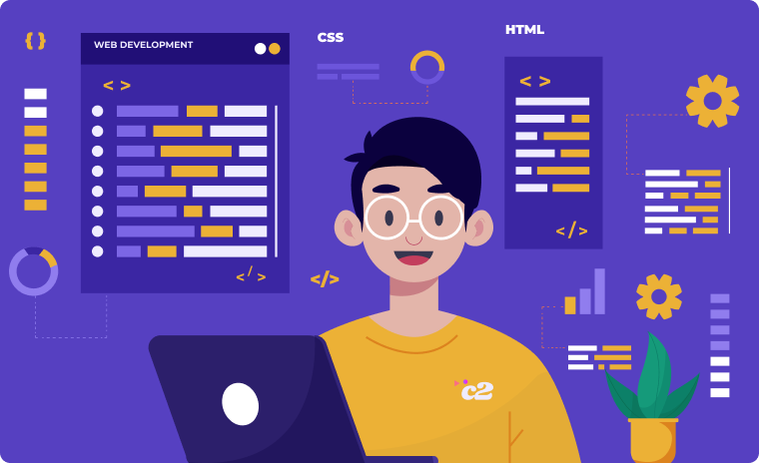To Code or not to Code: What to Teach High Schoolers
There is a certain correlation between the job market and the interest certain college programs attract. Of course, these two are not totally in sync, with the 4-year delay stemming from the college education causing shortages or oversupply of certain skills in the job market. Except for mainstays like medicine and law, most programs see their popularity fluctuate in time depending on how the economy at large is faring.
Nowadays, fields such as computer science and software engineering are immensely popular, with parents hysterically urging their kids to learn coding. A case in point could be the introductory Computer Science 50 course at Harvard, which has become one of the most popular courses, if not the most popular, offered, consistently attracting 10-12 percent of all students for years.
Computer science courses in high schools: Yea or nay?
This enthusiasm has brought about calls for high school curricula to include courses on coding. The proponents of the idea, like the Princeton professor Robert Sedgewick, argue that coding skills will be indispensable in the near future, just as reading and writing are now, and underscore how learning to code can foster logical thinking and creativity in high school students. Those who are against the idea have no problem with kids becoming logical thinkers, obviously, but they regard this “everybody-should-code” movement as something promoted by corporate giants for their own profit. In their eyes, this is very much like the twentieth century campaigns to train students on industrial and agricultural skills because that was what the times called for back then. The naysayers believe that modifying high school curricula according to the wishes of corporate leaders could turn schools into vocational workshops, when they should be focusing on culture and promoting social mobility.
Regardless of the ongoing debates, 33 states in the U.S. have already moved to adopt policies requiring public high schools to have computer science courses in their curricula. As of 2020, 47 percent of high schools in California already had realized that goal. Alabama devised an ambitious plan, making it mandatory for every K-12 school to offer computer science courses by 2022-2023.
Is it possible?
That U.S. is leading the way in teaching high school kids how to code shouldn’t surprise anyone, considering the wealth of this country, and the ability of its high-tech industry to influence policymakers. Scandinavian countries, too, are teaching computing in high schools in one form or another. However, it wouldn’t be realistic to expect this to become a worldwide trend, since most developing countries in Asia, Africa and South America lack the resources, technological infrastructure and the manpower to adopt such policies. On the other hand, limiting this initiative to high-income neighborhoods where infrastructure is ready will just aggravate the already deep-rooted inequality among children of different socio-economic backgrounds.
Is it even necessary?
Even in the event that all the stars somehow align and there is a will and resources to introduce computer science courses into high school curricula, the question we have to face is, ‘is it even necessary?’ It turns out that the answer is “not really.” The programming languages being taught in high schools will probably no longer be relevant by the time the students enter the workforce. They might start to go out of fashion even before the kids get into college. We also have to remember that staying up to date on the most relevant programming languages will be a huge challenge for CS teachers in high schools and this will put further stress on the already scarce resources.
A better option
There is an alternative, though. Making use of low-code/no-code application platforms (LCAPs/NCAPs) to familiarize students with the basic skills needed to develop apps, without getting into hard-core programming, seems to be a logical middle ground. The low-code platform Mendix does that with its Mendix University Program, where university students in more than 100 universities around the world are learning how to build apps without coding knowledge. The graduates of the program are expected to successfully bridge the gap between the technical and non-technical teams in their work places in the future.
This formula could easily be adapted to high schools through the use of no-code platforms, which require no coding knowledge at all. After all, NCAPs take the abstraction level a little bit higher than the LCAPs, making it easier to create apps for the uninitiated. Teaching high school students how to use no-code tools could give them the necessary tech-literacy this day and age demands, without turning high schools into a feeder system for corporate firms.
Despite being notorious for having a shorter attention span than previous generations, members of the Gen Z are characterized as “pragmatic and realistic.” Thus, it is safe to assume that, instead of looking at endless lines of code on a screen, they will be much more comfortable interacting with “blocks of code” on NCAPs that they can drag-and-drop to build apps they can use on their phones. They will experience instant gratification right away, going through back-to-back “aha!” moments and realizing value in a short time. NCAPs could nurture the skills like creativity and logical thinking in all students and help some of them develop enough interest to become professional developers one day, without taking away much time from maths, science and arts that all students should be exposed to as teenagers.
Peaka envisions a future where app development will not be the prerogative of a select few, but a mainstream skill. In the near future, people will no longer turn to developers for apps they need to have in their lives and choose to do it themselves. That’s why Peaka team has been making painstaking efforts to perfect its UI—because that’s where the future will be shaped.




 Please
fill out this field
Please
fill out this field










